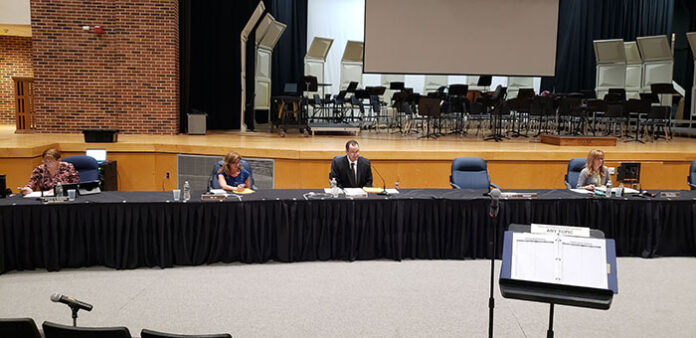
JACKSON – With graduations having commenced in June, members of the Board of Education and administrators are turning their focus toward the next school year.
The challenges of the 2022-2023 school year will involve the district’s spending plan. The total budget is down by 4.69% but the tax rate is seeing a .0079-cent increase.
The 2022-2023 proposed school tax rate is $1.4198 per $100 of assessed home value. The average home in Jackson is assessed at $329,862. This means the average homeowner will pay $26 more per year in school taxes.
The total budget this year is $167,766,627 which is a $8,260,244 reduction from last year representing a change of 4.69%.
The general fund tax levy this year is $91,445,509 a change of $1,793,049 in 2021 representing 2%.
The tax levy is the amount to be raised by taxation and it takes two forms: the operating budget, also known as the general fund, or debt, made up of things like previously approved construction projects and referenda.
The total debt came in at $8,430,814 a change of $5,624 or 0.07%.
Federal/State Programs came to $18,486,129 marking a change of $3,766,171at 16.92%. The general fund totals $140,849,684 a change from 2021 of $4,488,449 or 3.09%.
State Aid
The most significant change from last year is probably the state aid. The district is receiving $10,352,511 less than last year. The total is $36,026,107.
At numerous Board of Education meetings, Jackson officials have discussed how the children will be impacted by state aid spending formula cuts in the last several years.
Superintendent Nicole Pormilli submitted formal testimony during the April 21 State Senate Budget hearings and called on legislators and Governor Phil Murphy to correct the damage the cuts have inflicted.
The school district again submitted an application to the Department of Education for Stabilization Aid, and lawmakers from the 12th Legislative District are “advocating on our behalf for that aid,” according to a budget PowerPoint presentation shown in the spring.
Twelfth District Legislators Senator Samuel D. Thompson, Assemblymen Robert D. Clifton and Ronald S. Dancer have sponsored/introduced/are developing multiple pieces of legislation aimed at school aid relief, including bills to increase school aid for busing non-public school students, fully restore the school aid cut to bring funding back to 2017-18 levels and increase stabilization aid available from the proposed $20 million to $100 million.
Pormilli told members of the public during a prior Board of Education meeting that the state aid cuts caused the loss of four positions through attrition/retirements and reductions in force. The current class sizes will however, remain the same. The district has eliminated 147 positions since the start of the budget cuts.
The School District also lost most of its Tier 1 Capital Projects and experienced a reduction in school-based budgets and some technology.
This year’s budget supports investments in curriculum through the adoption of materials for the next school year in math and science, teacher and student material, texts and online resources.
It also supports technology through maintenance and investments in technology infrastructure. The spending plan also supports athletics and co-curricular activities through staffing, rotating investments in equipment and supplies.
The spending plan also supports Special Education by providing IEP (Individual Education Plan) programs, services, equipment and software for all classified students, out of district tuition, nursing costs for special needs students and related services for students.
It also includes an extended school year program. Capital projects for the facilities department have been prioritized by need.
The transportation department will maintain buses through careful schedule of replacement and repair.
State Aid cuts were only part of the budget’s impact. There were other annual factors that impacted the spending plan such as contractual obligations, rising costs such as software licenses, gas prices and increasing insurance premiums.
Tuition increases were also noted as well as increases in special education out-of-district transportation costs and less staff contribution toward benefits which meant more district funds had to be allocated.







